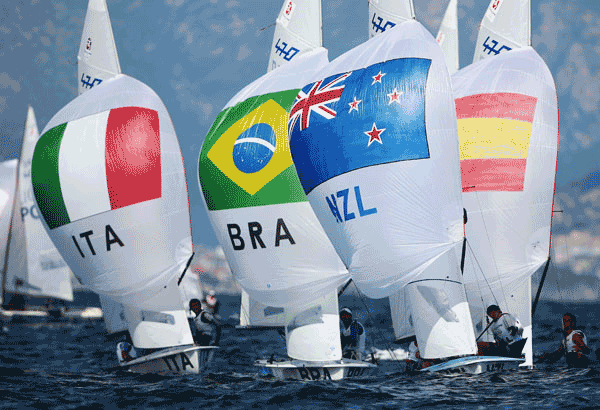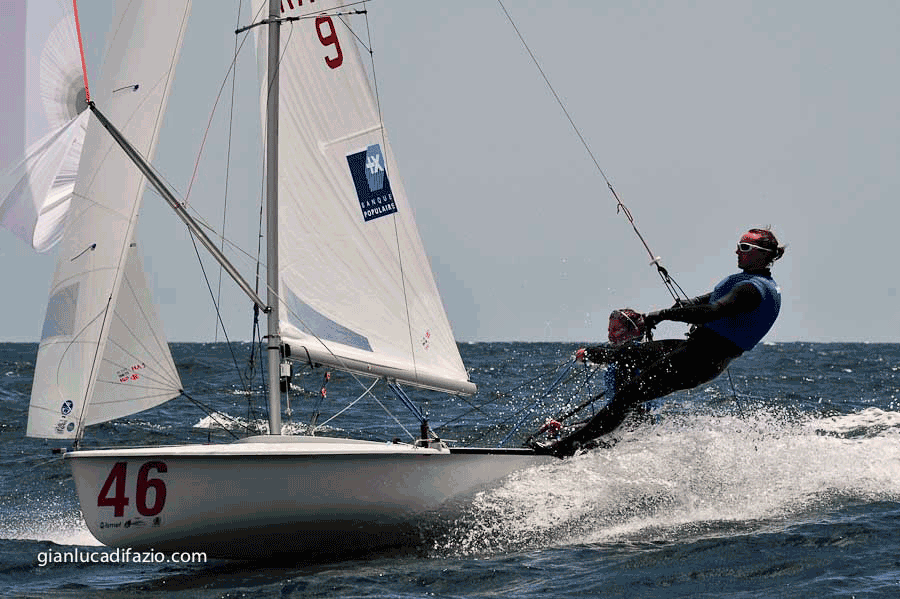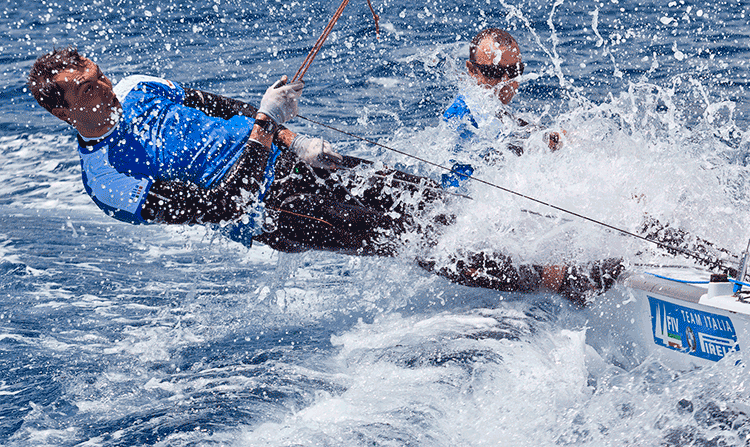My first challenging boat was a 470. It's a very technical and glorious dinghy, today still an Olympic class, able to teach a lot to those who want to better understand how to sail a performing dinghy.
Fine tunings, and best conducting of a performing sailing dinghy

But not only. The 470 is a boat that has much to teach even those who, then, want to navigate with cabin cruisers.
In fact, this boat has a lot of settings that are also found on the cabin cruisers, with the advantage, as all dinghies in general, to be more responsive to maneuvers, or to the stresses of wind and waves; thus, it allows to understand, with more immediacy, and often with a funny capsizing..., the effect of your choices. Always remember that many great oceanic and offshore sailors have begun sailing with dinghies.
Today skiff are in fashion, which are over powered, easy planning and very fast; they require more acrobatic crews for the need to move very quickly on board, but in reality deliberately more simple as tunings, and basic conducting of the boat. Suffice to say that they are all equipped with the gennaker, which is much easier than spinnaker to make efficient, since there is no spinnaker pole, or barber - hauler to adjust.
In any case , whether you are the owner of traditional dinghy, or of a skiff, or even of a cabin cruiser, I would recommend reading a book that, several years ago, at the beginning of my sailor career, I found on the website of the U.S. Association of the class 470.


In the manual, the author, Arthur Gurevitch, covers a wide range of topics. After some preliminary questions (data of the boat and navigation rules), you start to get serious with the tunings of the standing rigging of the boat. It's from this book that I really learned to adjust the tilt angle of the mast according to different wind conditions (forward/backward, and measured by the so-called "rake"), understanding the effect and cost-effectiveness of different positions. We move, then, to basic boat upwind and downwind conduction, and the description of the maneuvers of tacking and gybing. But not only the author explain very well the fine-tuning of the boat, and most of the sails, and crew positioning and balance to make the boat more powerful whlie sailing upwind, at broad reach and at stern wind. Windward direction, in particular, apparently easier, is one that puts more emphasis on the differences and the varying skill of the crews in running the boat. So, the positions of the block of jib traveler (forward or aft), adjusting of the mainsail, boom vang, etc... are explained in detail.
A separate chapter is devoted only to the spinnaker....
After so many years, when I plane (now with a laser 4000) abeam under gennaker, still it sounds in my head "keep the boat under the mast", a slogan read in this manual, and that taught me in a few words how to respond with the rudder to changes in the wind hitting the boat at this direction. And so I realized quickly that, during gusts, when the boat heels, I have to bear away, so that I start planning and enjoing ....
I hope you enjoy reading, and if you have any questions or comments, write below in the space reserved for you, or in Waterwind forum.
Enjoy the wind!
Without your Support, Waterwind wouldn't exist. Become our supporter! If you want to advertise with us, read here, or contact us. Collaborate with us. Read here! Buy our Gadgets! Visit our YouTube channel!



